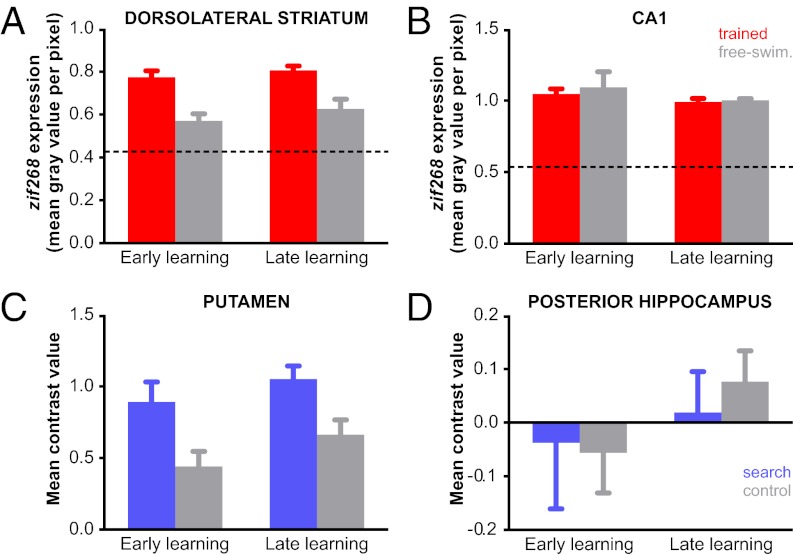Fig. 3.
Dorsolateral striatum (ventral anterior subdivision displayed in human; Fig. S3 C and D show other subdivisions) and hippocampus did not show learning specific changes in mouse (A and B) or human (C and D). (A and C) In dorsolateral striatum, activity during water maze learning and the free-swimming control condition was greater in comparison with baseline in both species (caged controls in mouse and rest in humans). Furthermore, a generalized increase in water maze learning compared with free-swimming was observed in both species across early and late phases of training. See SI Discussion. (B and D) No differences were observed between experimental and free-swimming control groups in CA1 (mouse) or posterior hippocampus (human). Error bars represent SEM.

